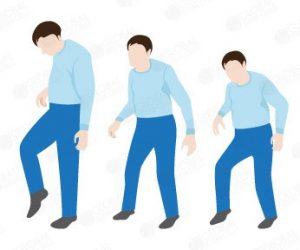Call Us Today For FREE Consultation
“Do something today your future self will thank you for”
Ataxia Causes, Symptoms & Treatment

Ataxia is a neurological sign consisting lack of muscle management or coordination of voluntary movements outcomes from harm to the part of your brain that controls muscle coordination (cerebellum). Many conditions can cause ataxia, which includes alcohol abuse, positive medicines, stroke, tumor, cerebral palsy, mind degeneration, and more than one sclerosis. Inherited defective genes also can cause circumstances.
Symptoms:
It can increase over the years or come on suddenly. A sign of some of the neurological problems, ataxia can motivate:
- Poor coordination
- Unsteady walk and an inclination to stumble
- Difficulty with great motor responsibilities, including eating, writing or buttoning a shirt
- Change in speech
- Involuntary returned-and-forth eye actions (nystagmus)
- Difficulty swallowing
Causes:
- Head trauma: Damage to your mind or spinal twine from a blow on your head, consisting of may occur in an automobile accident
- Cerebral palsy: This is a widespread term for a collection of disorders resulting from damage to a child’s brain.
- Autoimmune illnesses: Multiple sclerosis, sarcoidosis, celiac sickness, and other autoimmune situations can motivate ataxia.
- Paraneoplastic syndromes: These are uncommon, degenerative problems precipitated with the aid of a boom at the mind, cancerous (malignant) or noncancerous (benign), which can damage the cerebellum.
- Toxic response: Effect of certain medicinal drugs, particularly barbiturates, sedatives, such, as chemotherapy, Alcohol, and drug intoxication; heavy metal poisoning, which includes a lead or mercury
Vitamin E, nutrition B-12, or thiamine deficiency. Cerebellar Ataxia situations affecting the cerebellum do produce ataxia. People with cerebellar ataxia can also have trouble regulating the pressure, range, direction, speed, and rhythm of muscle contractions. - This outcome in a characteristic form of irregular, uncoordinated movement which can take place itself in many possible methods, may also show the instability of gait, the issue with eye actions, dysarthria, dysphagia, hypotonia, dysmetria, and dysdiadochokinesia. These deficits can vary relying on which cerebellar structures have been broken, and whether the lesion is bilateral or unilateral.
- People with cerebellar ataxia might also initially present with terrible balance, As cerebellar ataxia turns into severe, exquisite assistance and attempt are had to stand and stroll.
There can also be slurring of speech, tremors of the voice, and ataxic breathing. - Impairments with alternating actions (dysdiadochokinesia), There may also be tremor of the head and trunk (titubation) in people with cerebellar ataxia
- Dysfunction Of The Vestibulocerebellum (Flocculonodular Lobe) impairs the stability and the management of eye moves.
- This provides itself with postural instability, The instability is therefore worsened while standing with the toes collectively, regardless of whether the eyes are open or closed.
- This is a poor Romberg’s take a look at, or more appropriately, it denotes the man or woman’s inability to perform the test, because the man or woman feels unstable regardless of open eyes.
- Dysfunction Of The Spinocerebellum (Vermis and Associated Areas Near The Midline) gives itself with a wide-based “drunken sailor” gait (known as truncal ataxia), characterized by the aid of unsure begins and prevents, lateral deviations, and unequal steps. As a result of this gait impairment, falling is a difficulty in patients with ataxia.
- Dysfunction Of The Cerebrocerebellum (Lateral Hemispheres) provides disturbances in sporting out voluntary, deliberate movements through the extremities (called appendicular ataxia).
These include:
- Intention tremor
- Peculiar writing abnormalities (huge, unequal letters, abnormal underlining)
- Dysarthria
- Dysdiadochokinesia
- Inability to choose distances known as dysmetria
- Underneath taking pictures of hypometria, or overshooting hypermetria
- The rebound phenomenon, additionally known as the lack of the check reflex is likewise every so often visible in patients with cerebellar ataxia.
Sensory Ataxia:
- The term sensory ataxia is employed to indicate ataxia because of a lack of proprioception, the loss of sensitivity to the positions of joints and body parts.
- This is normally resulting from a disorder of the dorsal columns of the spinal cord.
- Sensory ataxia presents itself with an unsteady “stamping” gait with heavy heel moves, as well as a postural instability that is typically worsened when the dearth of proprioceptive enter cannot be compensated for by visual enter, which includes in poorly lit environments.
Vestibular Ataxia:
- The term vestibular ataxia is hired to signify ataxia because of the disorder of the vestibular gadget, which in acute and unilateral instances is associated with outstanding vertigo, nausea, and vomiting.
- In gradual-onset, persistent bilateral instances of vestibular dysfunction, those function manifestations can be absent, and dysequilibrium can be the sole presentation.
PHYSIOTHERAPY TREATMENT:
Goals:
- Improving balance and postural reactions
- Increase postural stabilization
- Improve coordination
- Stabilize joints
- Developing upper extremity and lower extremity functions
- Increase functional independence (i.E. everyday sports)
Are you looking for physiotherapy treatment for your ataxia?
Contact progressive care physiotherapy and rehabilitation center for more details.
PHYSIOTHERAPY MAINLY FOCUSES ON:
- Balance and stability in sporting activities
- Cognitive techniques
- Visual Stimulation
- Increase coordination
- Sensory& cognitive strategies
- Breaking down complicated movements
- Frenkel’s Exercises
- Increase postural manage
- Stability to prevent pressure
- Re-educate functional gait
- Improve independence
- Normalize tone
- Muscle strengthen
Check out these links for relevant information: Speech therapy

Progressive Care Physiotherapy
Progressive Care Physiotherapy Management is the best service in the physiotherapy industry. It is known for providing the best service and cutting-edge technology to help speed up recovery, while also being able to offer various treatment options that are tailored to your specific needs.
For More details call us on 9618906780
